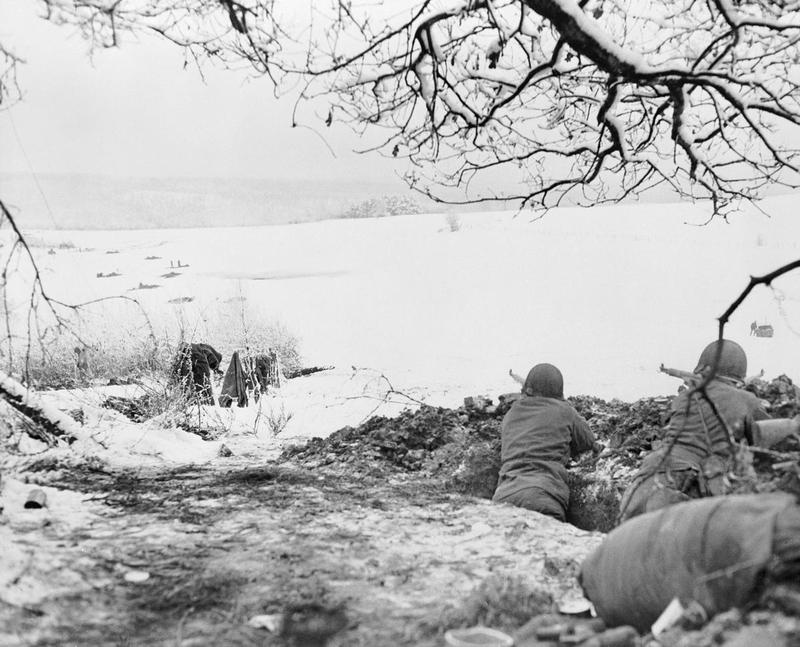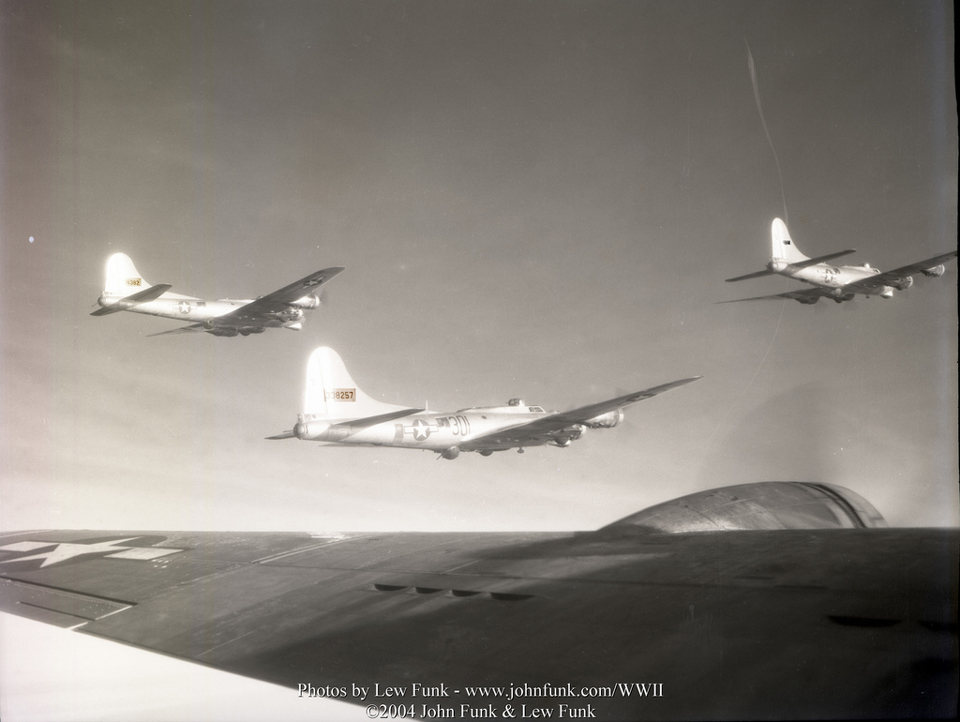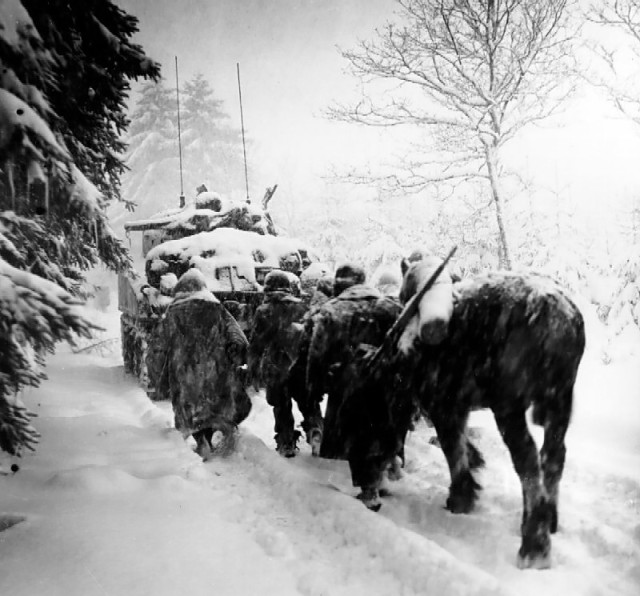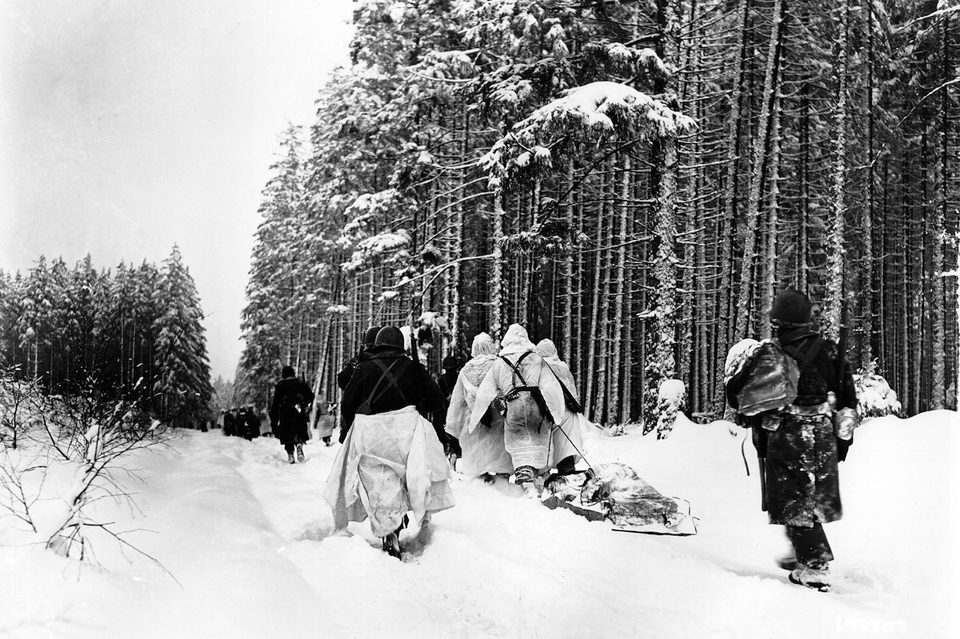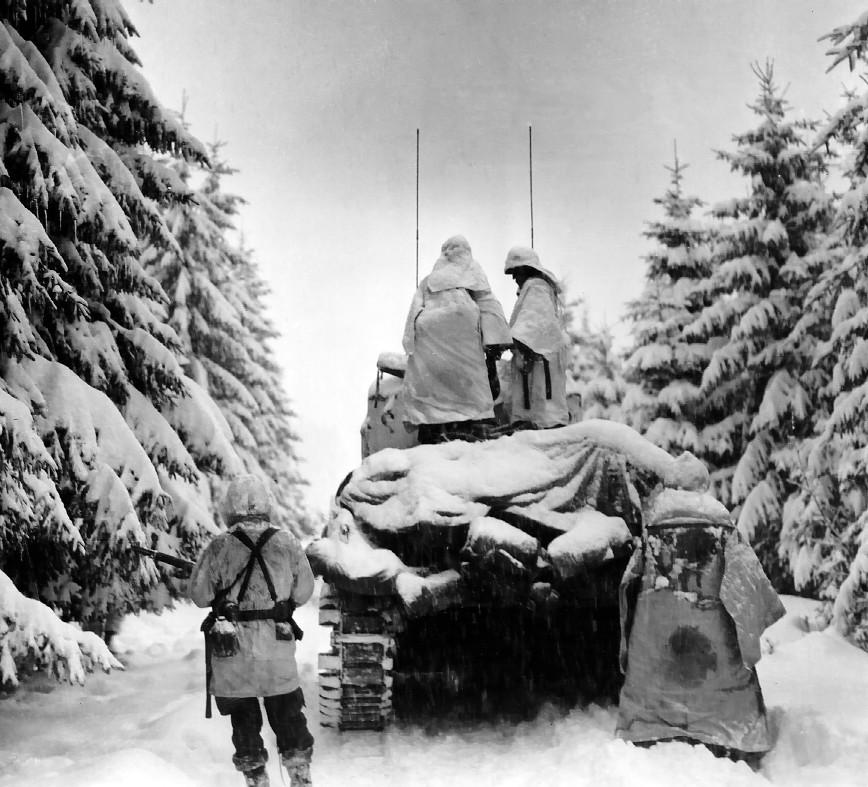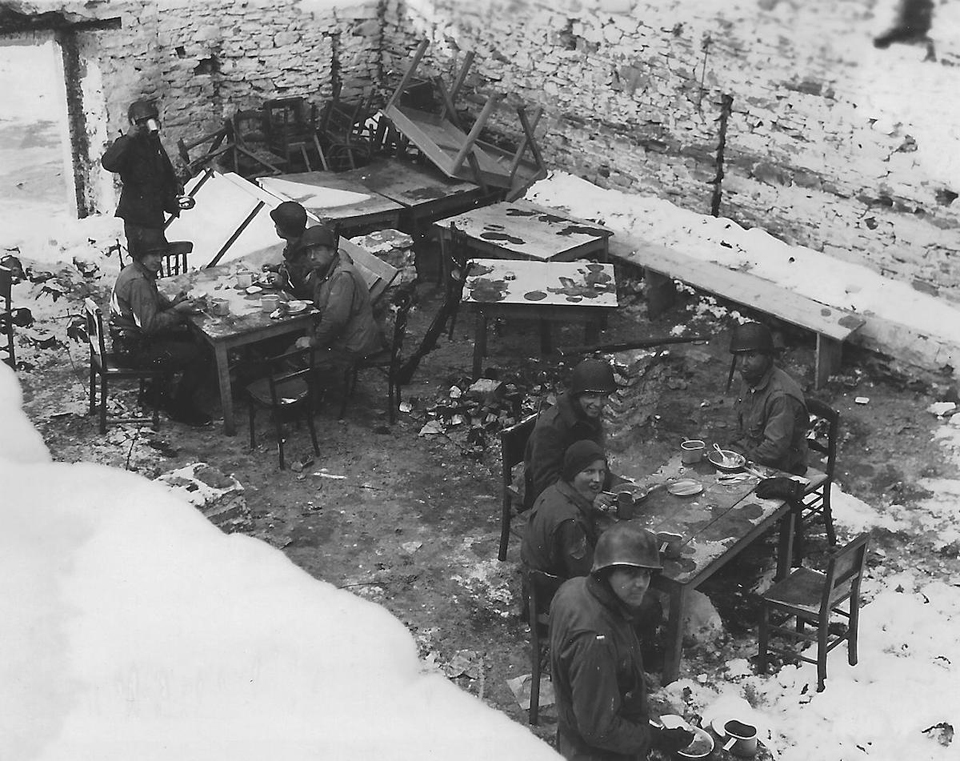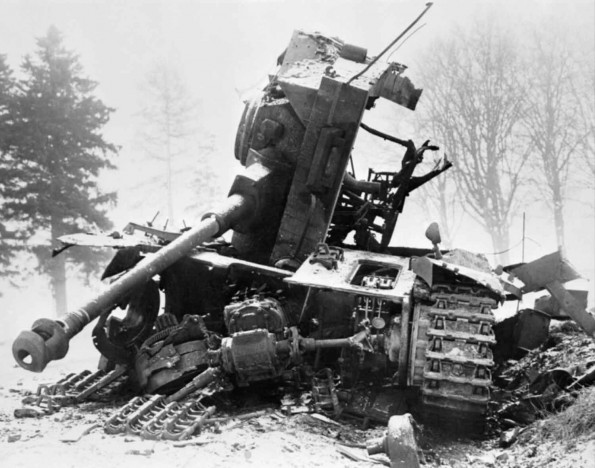Air Operations, CBI
BURMA- 80 10th Air Force fighter-bombers attack troops and supplies at 6 locations.
- 40 fighter-bombers support Allied ground forces near Namhkam and at 3 other locations.
- 23 14th Air Force P-40s and P-51s attack rail and river traffic.
Air Operations, Europe
1,000 bombers of the 8th Air Force attack Ruhr oil plants and bridges over the Rhine.
RAF BOMBER COMMANDDaylight Ops:
- 153 Lancasters of No. 3 Group attack the railway yards at Cologne/Gremberg in conditions of good visibility. Some of the bombing falls on the target but some overshoot.
- 3 Lancasters are lost and 1 crashes in France.
- 602 aircraft including 316 Halifaxes, 258 Lancasters and 28 Mosquitos of Nos. 1, 4, 6 and 8 Groups are sent to 2 targets in the Stuttgart area. This raid is split into 2 parts, with a 3-hour interval. The first force of 226 aircraft is directed against the important railway yards at Kornwestheim, a town to the north of Stuttgart, and the second is against the northwestern Stuttgart suburb of Zuffenhausen, where the target is believed to be the Hirth aero-engine factory. The target area is mostly cloud-covered for both raids and the bombing, on skymarkers, is scattered. Bombs fall in many parts of Stuttgart's northern and western suburbs. The important Bosch works, in the suburb of Feuerbach, is hit. A large number of bombs fall outside Stuttgart, particularly in the east around a decoy fire site which is also firing dummy target-indicator rockets into the air. The village of Weilimdorf, situated not far away, receives damage and casualties from bombs missing their intended targets. This is the last large RAF raid on Stuttgart. Stuttgart's experience was not as severe as other German cities. Its location, spread out in a series of deep valleys, had consistently frustrated the Pathfinders and the shelters dug into the sides of the surrounding hills had saved many lives.
- 11 aircraft, 6 Lancasters, 4 Halifaxes and 1 Mosquito are lost.
- 67 Mosquitos are sent to Berlin and 8 to Mainz in a 'spoof' raid for the Stuttgart attack, 6 Lancasters of No. 1 Group lay mines in the Kattegat, and there are 36 Mosquito patrols and 51 RCM sorties.
- 1 Mosquito of the No. 100 Group crashes in France.
Air Operations, Philippines
- FEAF B-24s attack Corregidor.
- XIII Bomber Command B-24s attack the Cavite naval base.
- B-24s, V Bomber Command B-25s and A-20s, and V Fighter Command fighters attack the Laoag airfield on Luzon and targets between Subic Bay and Manila and elsewhere on Luzon.
Air Operations, Volcano Islands
- 20 VII Bomber Command B-24s attack Iwo Jima.
- During the night, 10 VII Bomber Command B-24s conduct snooper raids against Iwo Jima.
Burma-China
The first convoy officially dispatched from India to China reaches the Chinese border and is received with solemn ceremonies at Mu-se. The Burma Road is re-christened by Chiang Kai-shek the Stilwell Road, in honor of the general who fought so hard for its re-opening and its improvement.
[Eastern Front
The 1st Baltic Front captures almost the whole of the German Memel pocket, and Lithuania is completely liberated. In the central part of East Prussia the Russians close in on the Königsberg pocket, capturing Bischofsburg and Sensburg. The Germans hold out at Elbing and exert pressure northwest of Allenstein (Olsztyn).
Pushing on toward Germany on a wide front, the Russians capture the Polish frontier towns of Sepolno, Czarnkow and Leszno and the German town of Guhrau. In the south, the 1st Ukraine Front completes the capture of the principal industrial towns along the border between Poland and Upper Silesia, taking Beuthen in Silesia and Katowice in Poland. In the Carpathian region, the 4th Ukraine Front takes Poprad in Czechoslovakia.
Captured Red Army Gen Andrei A. Vlasov takes over command of the anti-Stalin Russian army fighting with the German Waffen SS.
EAST PRUSSIAThe German 4th Army continues to be pummelled by heavy Soviet firepower around Wormditt.
POLANDThe 1st Ukrainian Front takes Katowice and Leszno.[MORE]
[Germany, Home Front
Berliners are ordered to work on the digging of anti-tank ditches.
[Pacific
The US submarine Spadefish (SS-411) sinks the Japanese frigate Kume in the Yellow Sea.
[Philippines
Mindoro is secured by US forces.
[Western Front
The German Ardennes salient is finally eliminated and the line restored to the original German starting point of Dec 16. The German offensive inflicts 75,000 casualties on 29 US and 4 British divisions. In turn, the Germans suffer 100,000 dead and wounded, and lost 800 tanks and about 1,000 planes. The US 1st Army can now start the final dash to the Siegfried Line.
A great part of the VIII Corps, US 3rd Army, has reached the Our River.
[Images from January 28, 1945
|
|
|
|
|
|
|
|
